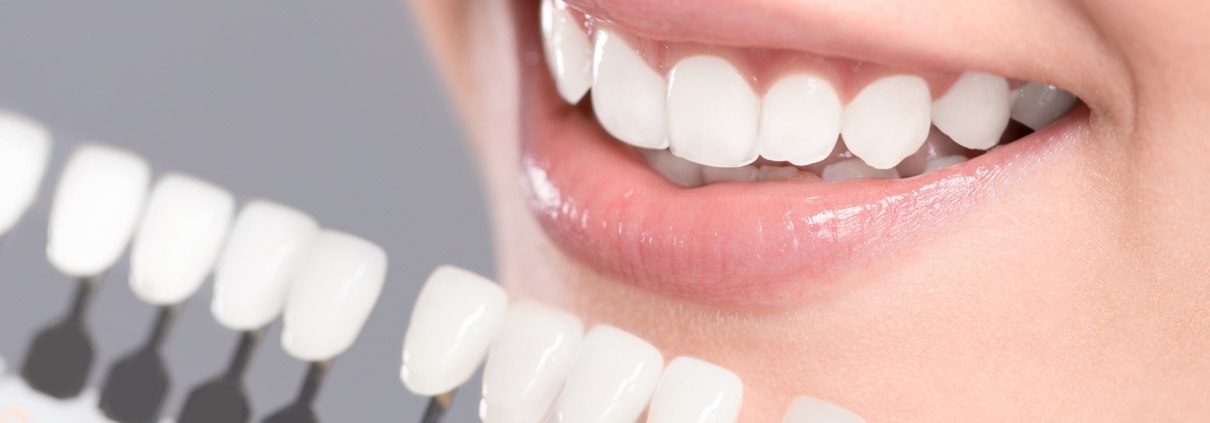Finding the Best Color for Your Teeth
The color of our teeth plays a significant role in our overall smile aesthetics and can greatly impact our self-confidence. Achieving the ideal tooth color involves considering factors such as natural shade variations, personal preferences, and individual characteristics. In this article, we delve into the nuances of tooth color and explore how to determine the best shade for a radiant and harmonious smile.
Understanding Tooth Color
Natural Variations:
Teeth come in a range of natural shades, influenced by factors like genetics, age, and lifestyle habits.
While some individuals naturally have brighter or whiter teeth, others may have more subdued or yellow-toned teeth.
Factors Influencing Tooth Color
Genetics:
Genetic factors can determine the inherent color and translucency of enamel.
Age:
Teeth tend to darken with age due to changes in enamel structure and the accumulation of stains.
Lifestyle Habits:
Consumption of staining substances like coffee, tea, and tobacco can contribute to tooth discoloration.
Dental Health:
Poor oral hygiene, dental decay, and certain medications can affect tooth color.
Finding the Best Tooth Color
Consider Natural Harmony:
The best tooth color is one that complements your overall facial features, skin tone, and lip color.
Aim for a shade that appears natural and harmonious with your smile, rather than overly bright or stark.
Consult with a Dental Professional:
Dentists and cosmetic dentists can assess your current tooth color and discuss your goals for enhancement.
Professional guidance can help determine the most suitable treatment options, whether it involves whitening, veneers, or other cosmetic procedures.
Whitening Options
Professional Teeth Whitening:
In-office or at-home whitening treatments supervised by a dentist can effectively lighten tooth color and remove surface stains.
Over-the-Counter Whitening Products:
Whitening toothpaste, strips, and gels available over-the-counter can provide modest improvements in tooth color, although results may vary.
Cosmetic Dentistry Solutions
Dental Veneers:
Custom-made porcelain or composite veneers can conceal imperfections and create a brighter, more uniform smile.
Dental Bonding:
Composite resin bonding can address minor flaws and discolorations, restoring a natural-looking appearance.
Maintaining Tooth Color
Practice Good Oral Hygiene:
Brushing twice daily, flossing, and using mouthwash can help prevent stains and maintain a bright smile.
Regular dental check-ups and cleanings are essential for removing plaque and tartar buildup that can contribute to discoloration.
Limit Staining Substances:
Minimize consumption of foods and beverages known to stain teeth, such as coffee, tea, red wine, and dark-colored sodas.
Use a straw when drinking staining beverages to minimize contact with teeth.
Quit Smoking:
Smoking and tobacco use not only stain teeth but also contribute to gum disease and oral health issues. Quitting smoking can improve overall oral health and tooth color.
Embracing Your Unique Smile
Celebrating Individuality:
Embrace the uniqueness of your smile, including its natural color variations and imperfections.
A confident smile reflects inner beauty and personality, transcending the pursuit of an idealized standard of tooth color.
The quest for the best tooth color involves a blend of science, artistry, and personal preference. By understanding the factors influencing tooth color, consulting with dental professionals, and exploring available treatment options, individuals can achieve a smile that radiates confidence and natural beauty. Whether through professional whitening, cosmetic enhancements, or diligent oral hygiene practices, the journey to a brighter smile begins with embracing your unique dental characteristics and finding harmony in your overall aesthetic. Remember, the best tooth color is one that reflects your individuality and lights up your smile with authenticity and confidence.

